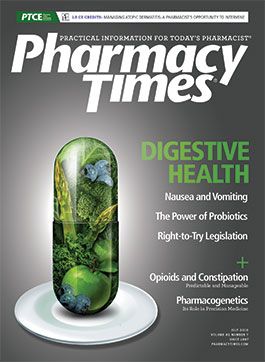Don't Miss Important Computer Alerts Seen by Technicians
The ability to view and assess alerts that may have been bypassed by other staff during order entry and drug utilization review may not be available to pharmacists in some pharmacy computer systems.
PROBLEM
In many community pharmacy settings, pharmacy technicians or pharmacy interns enter prescriptions into the pharmacy computer system. A pharmacist later verifies that the prescription has been entered correctly. The verification process is typically accomplished by comparing the prescription (or image of the prescription) to what was entered by the technician or intern (or the pharmacy label). As long as the original prescription (or image) is included in the verification process, this may seem to be a perfectly acceptable way to verify technician or pharmacy intern order entry and preparation of medications. However, the pharmacist may be unknowingly allowing the computer and the technician to perform the required drug utilization review. The checking pharmacist may not be aware of alerts that may have been displayed during the order-entry process, unless the technician or intern notifies the pharmacist. As a result, important drug interactions, allergies, duplicate therapies, excessive or subtherapeutic doses, or other identified contraindications may be missed.
Although bypassing certain alerts can be clinically appropriate, the technician or intern is not in a position to make this clinical decision, and important warnings sometimes are inappropriately overridden. For example, in a recent case reported to the Institute for Safe Medication Practices, a patient had a cephalosporin allergy documented in the pharmacy computer system. During order entry, the technician overrode the allergy alert that popped up while entering an order for cephalexin 500 mg; the technician also did not notify the pharmacist about the alert. The pharmacist checked the prescription but did not catch that the patient had an allergy to the medication. The patient ingested 1 capsule before catching the error. Thankfully, the patient did not experience any adverse effects.
SAFE PRACTICE RECOMMENDATIONS
The ability to view and assess alerts that may have been bypassed by other staff during order entry and drug utilization review may not be available to pharmacists in some pharmacy computer systems. However, it is critically important that the pharmacist have the opportunity to review and react to these warnings. Consider the following strategies to improve the verification processes when prescriptions are generated and dispensed:
- Require pharmacist review of clinically significant alerts. It should be impossible for order- entry technicians or pharmacy interns to bypass a clinically significant alert. Instead, these orders should remain in a queue for release by a pharmacist after responding to the associated alert. If a pharmacist eventually bypasses a clinically significant alert, require documentation of the reason, so it can be used for improvement activities.
- Print alerts along with labels. Some health information technology systems have the ability to print out significant alerts along with the other product labels that are produced. This way, the pharmacist is able to view the bypassed alerts when checking the final product before sending or dispensing the prescription.
- Print a daily report of bypassed alerts. Most computer systems will allow users to print out a daily report of bypassed alerts for a pharmacist to review. Review can take place during the nighttime hours, or there may be other recognized periods when the workload is lighter, staffing is better, or a pharmacist is scheduled for this purpose. This is much more achievable if the reports are organized first by clinically significant alerts that have been bypassed. Otherwise, the length of the report may prohibit review and follow-up. The process for follow-up with problematic prescriptions will also need to be described, especially if the review occurs at night. Although retrospective review of bypassed alerts is not optimal and should not replace concurrent verification and drug utilization review, harm could be mitigated if the problem is discovered quickly.
Dr. Gaunt is a medication safety analyst and the editor of ISMP Medication Safety Alert! Community/Ambulatory Care Edition.

